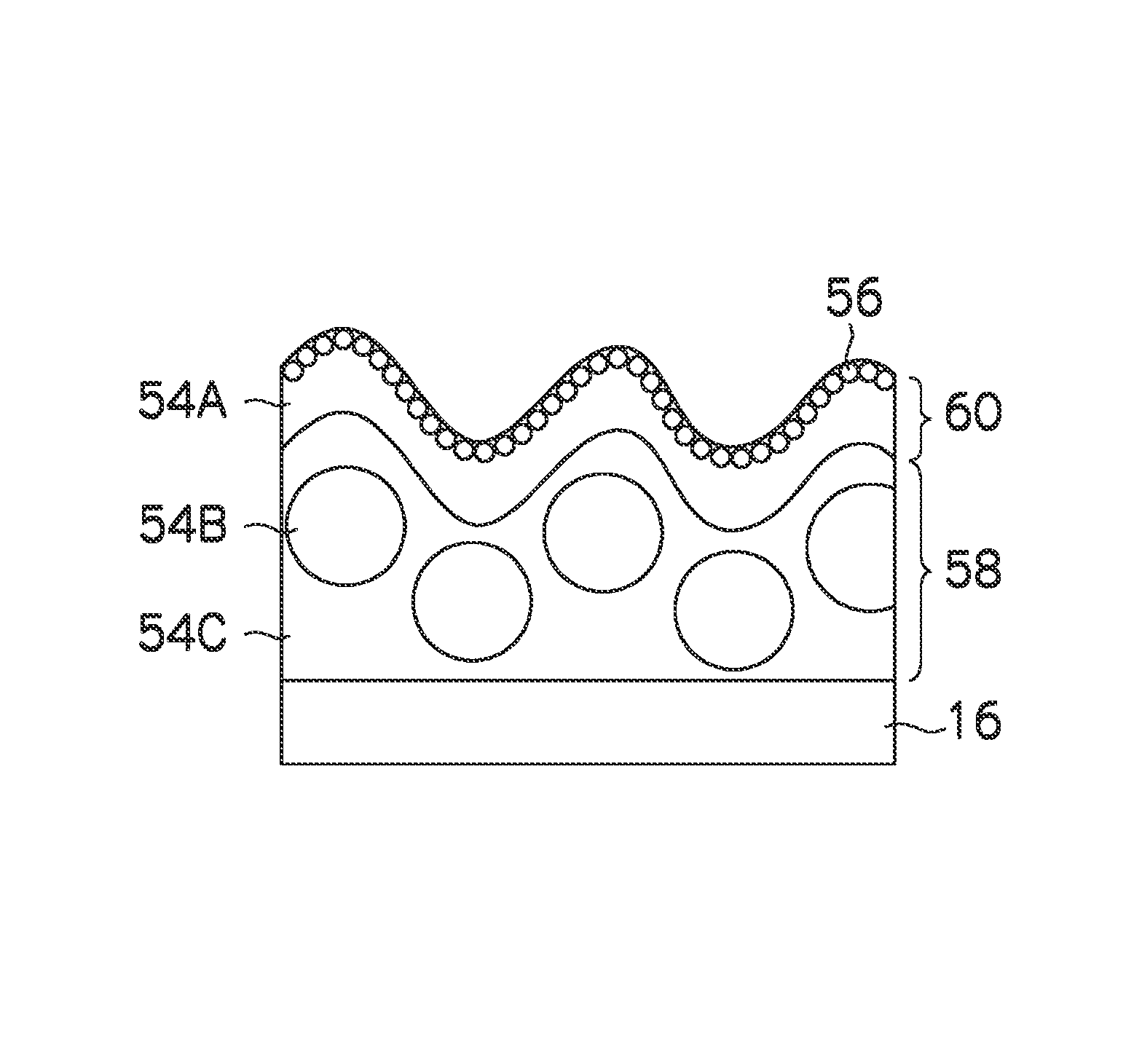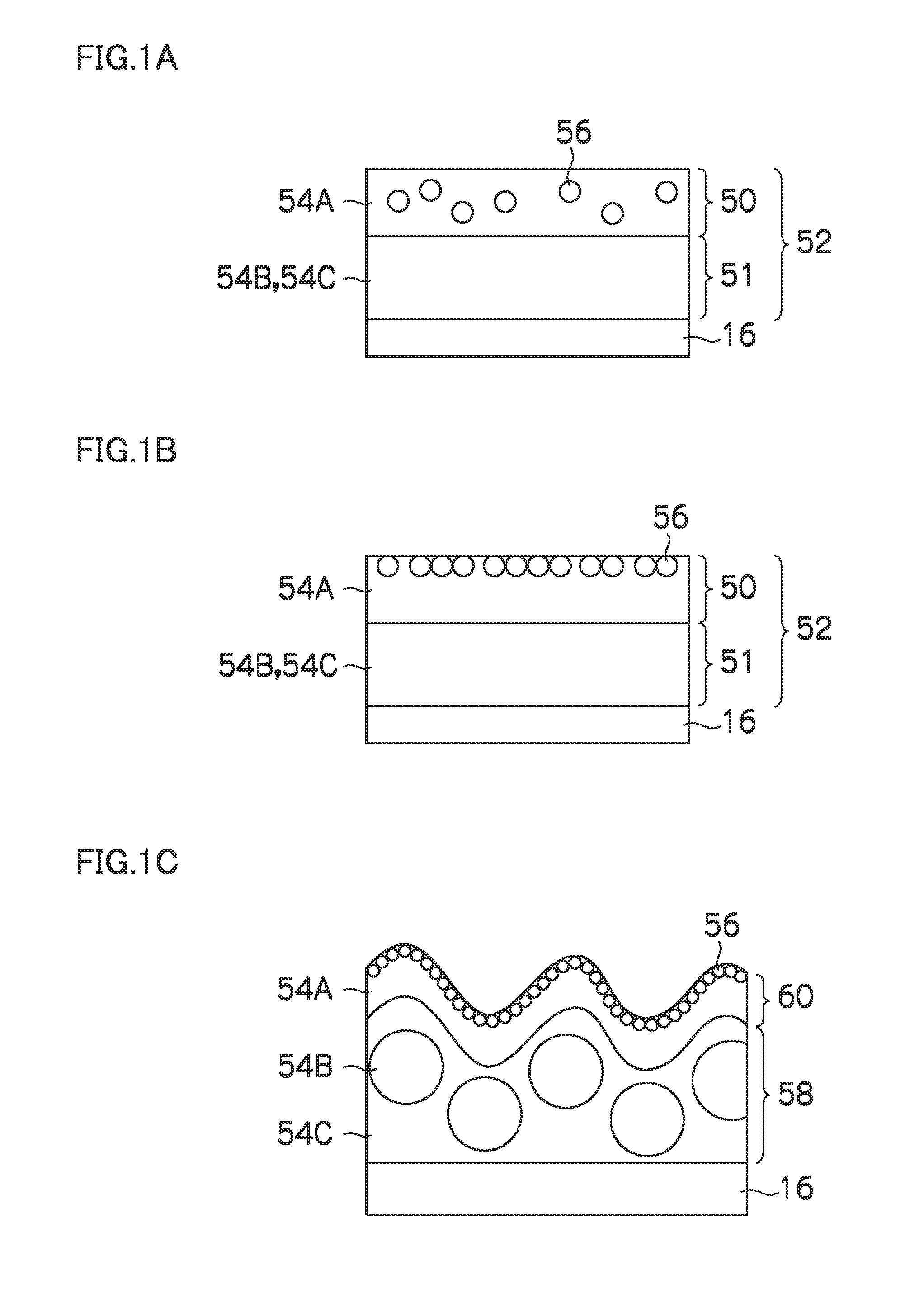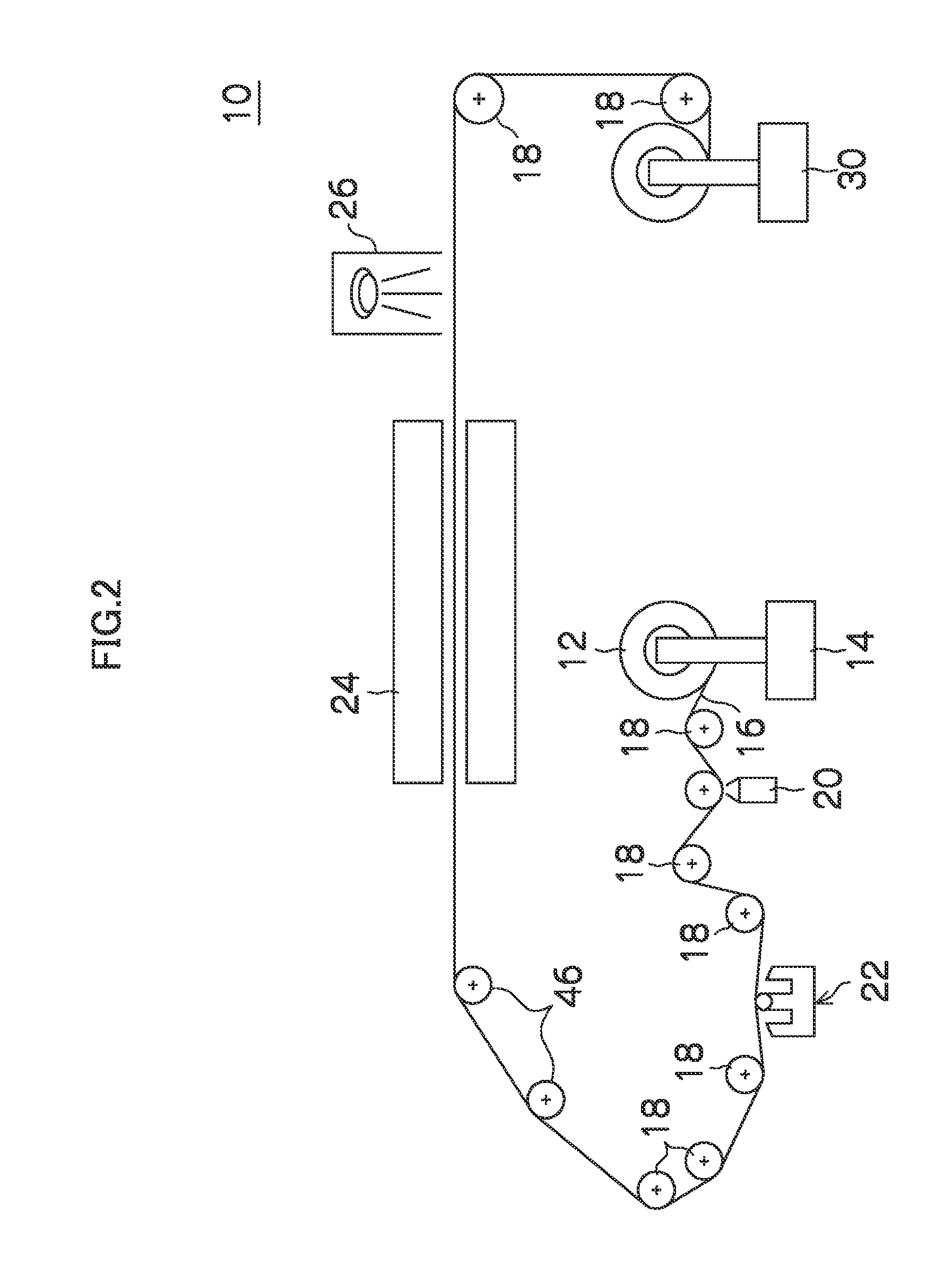Method for producing antiglare film
a technology of antiglare film and film film, which is applied in the direction of identification means, instruments, coatings, etc., can solve the problems of inability to see well, and achieve the effects of reducing the reflection and glaring of external light, reducing the cost, and improving productivity
- Summary
- Abstract
- Description
- Claims
- Application Information
AI Technical Summary
Benefits of technology
Problems solved by technology
Method used
Image
Examples
first embodiment
Examples Corresponding to the First Embodiment
[0199]Hereinafter, features of the first embodiment according to the present invention will be described more specifically by way of Examples, but the scope of the present invention should not be construed to be limited to the specific examples shown below.
Example 1
An Upper Layer, a Low-Refractive Index Layer
[0200]The surface of a hollow silica particle having an average particle diameter of 20 nm was treated with 3,3,3-trifluoropropylmethyldichlorosilane to hydrophobize the surface of the particle. A composition shown below was dissolved in 82 parts by mass of methyl ethyl ketone to prepare a coating liquid. The critical solid-content concentration of this system is 71%.
[0201]
Acrylic resin 15 parts by massHydrophobic particle0.2 parts by mass
[0202](A Lower Layer, an Antiglare Layer)
[0203]A composition shown below was dissolved in 82 parts by mass of methyl ethyl ketone to prepare a coating liquid. The critical solid-content concentratio...
second embodiment
Examples Corresponding to a Second Embodiment
[0219]Next, features of a second embodiment according to the present invention will be described more specifically by way of Examples, but the scope of the present invention should not be construed to be limited to the specific examples described below.
[0220]That is, coating liquids described below were prepared, and applied on a triacetyl cellulose having a thickness of 80 mm (Fujitac, made by Fujifilm Corp.). The film thicknesses of an upper layer and a lower layer at the instant of coating were each 50 μm. The films were dried after the application by exposing to dry air. At this time, the drying was carried out at a drying rate of a solvent of 0.6 g / m2·s. Thereafter, the films were subjected to a heat treatment at 100° C. for 1 min.
example 1
An Upper Layer, a Low-Refractive Index Layer
[0221]A composition shown below was dissolved in 82 parts by mass of methyl ethyl ketone (MEK) to prepare a coating liquid.
[0222]
Copolymer of 2,2,2-trifluoroethyl acrylate 4 parts by massAcrylic resin14 parts by mass
[0223](A Lower Layer, an Antiglare Layer)
[0224]A composition shown below was dissolved in 82 parts by mass of methyl ethyl ketone (MEK) to prepare a coating liquid.
[0225]
Cellulose acetate propionate 2.1 parts by massAcrylic resin15.9 parts by mass
[0226]As a result, in the upper layer, a phase separation was caused and a low-refractive index layer by the copolymer of 2,2,2-trifluoroethyl acrylate was formed; and also in the lower layer, a phase separation was caused and an antiglare layer was formed.
[0227]The antiglare film thus obtained was cut out into a predetermined size, and evaluated for whitening. The whitening was evaluated by pasting the obtained film on a liquid crystal display, and evaluating the appearance. The condi...
PUM
| Property | Measurement | Unit |
|---|---|---|
| refractive index | aaaaa | aaaaa |
| refractive index | aaaaa | aaaaa |
| refractive index | aaaaa | aaaaa |
Abstract
Description
Claims
Application Information
 Login to View More
Login to View More - R&D
- Intellectual Property
- Life Sciences
- Materials
- Tech Scout
- Unparalleled Data Quality
- Higher Quality Content
- 60% Fewer Hallucinations
Browse by: Latest US Patents, China's latest patents, Technical Efficacy Thesaurus, Application Domain, Technology Topic, Popular Technical Reports.
© 2025 PatSnap. All rights reserved.Legal|Privacy policy|Modern Slavery Act Transparency Statement|Sitemap|About US| Contact US: help@patsnap.com



